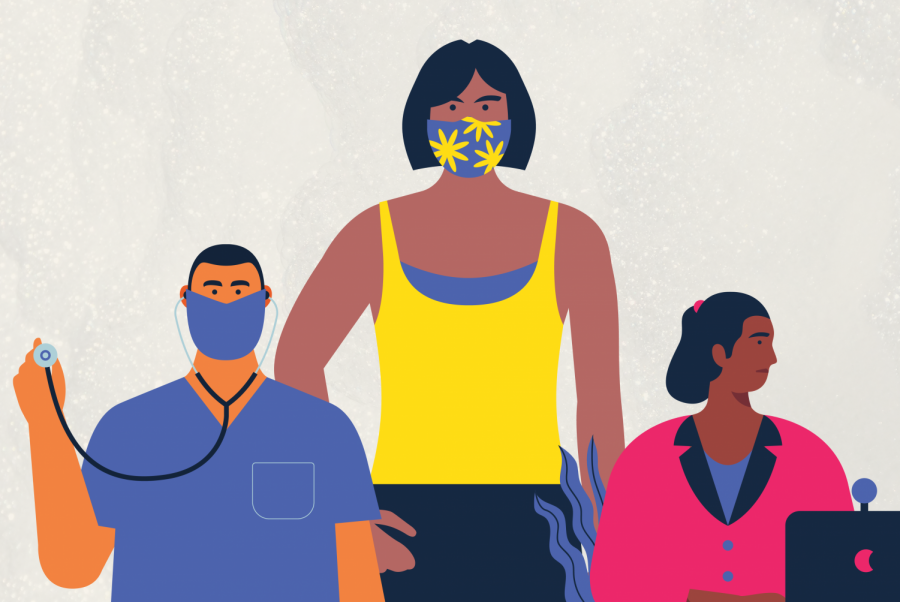University of Minnesota senate members recently passed a resolution to increase current safety measures in classrooms amidst the COVID-19 pandemic.
Passed by the Faculty and University Senates at special meetings on Oct. 6, the Resolution on Classroom Health and Safety under COVID-19 is a culmination of concerns raised by faculty, staff and students throughout multiple special meetings, open letters, town halls and forums over the past several months.
The resolution, which 18 faculty senators brought to leadership in September, includes seven proposed comprehensive safety measures for University President Joan Gabel and senior leadership to consider implementing.
“This resolution is saying the representatives of the faculty and the representatives of the students and staff feel these are things the president needs to take seriously, and we feel we have not had a necessary voice in forming these policies,” said Faculty Senator William Jones, one of the resolution’s authors.
The passing of the resolution by both senates signals widespread support across the University community. Gabel and senior leadership will provide a response at the Nov. 4 University Senate meeting; however, leadership is not required to implement any of the actions outlined in the resolution.
“Even if the voices from the senates are only advisory, a good [leader] would be circumspect about ignoring advice of this kind,” said Faculty Senator Gopalan Nadathur in an email to the Minnesota Daily.
The provisions include a robust COVID-19 testing policy that would require routine testing for all employees and students. The University does not require regular testing for students or most staff and faculty.
It also asks that instructors have the ability to disclose the existence of a positive test in classrooms without divulging a student’s private information. Currently, instructors are not permitted to notify their classes if a student in the class tests positive for COVID-19.
Faculty are also advocating for increased flexibility in choosing classroom modalities. Currently, they cannot teach remotely if a family member is immunocompromised. The resolution proposes individual departments, rather than the University’s central administration, have the authority to choose course modality.
The resolution also calls for a more comprehensive staff and faculty vaccine mandate, which the University is now implementing in order to comply with President Joe Biden’s executive order. Originally, these groups were only required to attest to being vaccinated or agree to regular testing.
“We’re in the classrooms, we’re teaching, we’re interacting with students … and we think that these are some of the adjustments that need to be made in order to make the classroom safer for everyone,” said Faculty Senator Michael Minta, a co-author of the resolution.
According to Minta and Jones, the ideas incorporated into the resolution began formulating in the summer during a series of meetings and public forums, where faculty, students and staff voiced concerns about returning to campus under the University’s safety measures.
“After the public forum … on Sept. 3, the open letter written by the graduate students and coalition of faculty, staff and students, and the sentiments that many of the senators who endorsed the resolution were hearing from their colleagues, it felt necessary to take a step to address this,” Nadathur said.
While the resolution passed in the University Senate, indicating support throughout the community, some stakeholders said they did not agree with the process faculty senators used to pass the resolution.
Leaders and members from the Civil Service, P&A and Student Senates said they wanted more consultation regarding the resolution, as it includes specific language that may affect staff and students. According to these leaders, faculty senators did not robustly and formally consult with them or their constituents prior to passing the resolution.
“It affected everybody, and we didn’t get a chance to make our two cents known or ask questions,” Civil Service Senate Chair Missy Juliette said.
Since the University Senate includes 146 faculty senators, 25 P&A senators, 25 civil service senators and 50 student senators, the faculty hold a majority membership. According to Senate leaders, this means it is generally easier for faculty to pass a resolution without broad consultation with students and staff.
Typically, the consultation process includes discussion between elected members and leaders from each senate to ensure a more accurate and comprehensive opinion of entire constituencies, P&A Senate Chair Scott Creer said.
While Faculty senators may not have conducted formal consultation, they said they used public forums and open letters to illustrate a shared consensus among students, staff and faculty regarding the resolution.
Regardless of how the procedure played out, it is now up to Gabel and senior leadership to respond to the resolution — either by implementing some or all of the proposed actions, or by maintaining the University’s current COVID-19 response.
“We [faculty] feel like we have a responsibility to ensure the safety of our students and ourselves, our colleagues and our family members,” Jones said. “I think if the University does act, that will help to fulfill that responsibility.”
`



















